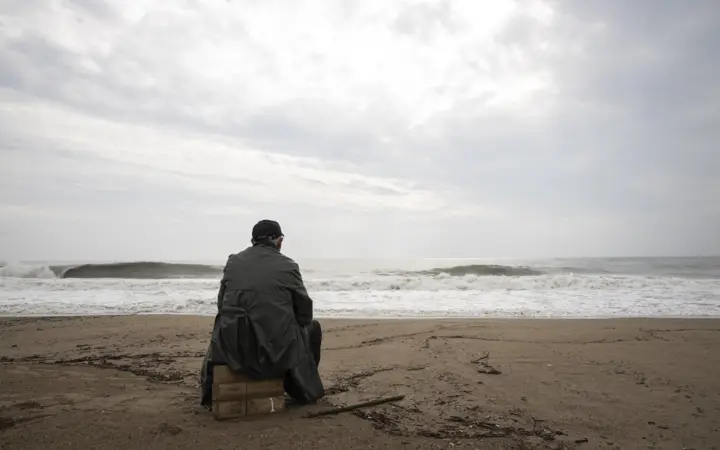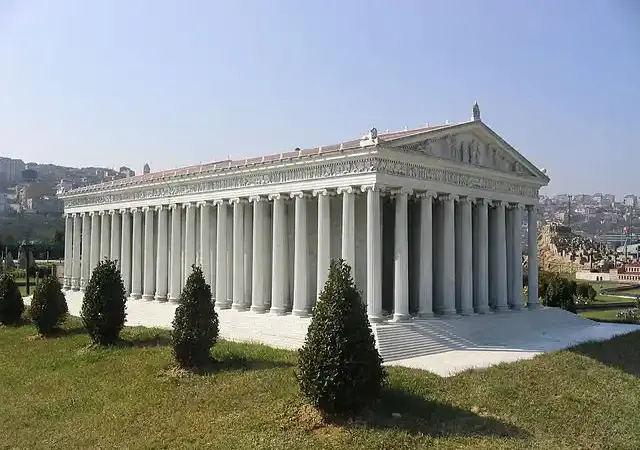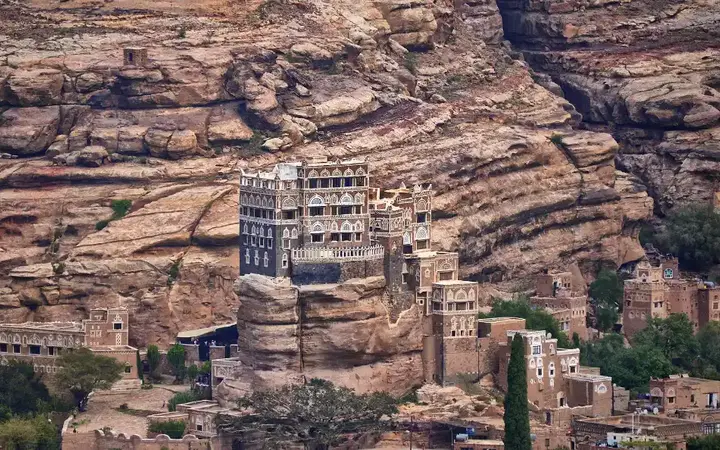Hospice of the King's Assistant... Masterpieces of art and color harmony in Kermanshah
The hospice of the king's assistant in the city of Kermanshah is one of the elegant and magnificent monuments that have survived from the Qajar period in Kermanshah. Built to be used in a religious ceremony to honor the courage of Imam Hussein, may God be pleased with him, among the Shiites, this building is famous for its unique and colorful tiles. The hospice was initially invented by the Ottomans, then the Mamluks used it under the name "Khanqah", where it was a place of rest, then it became one of the social customs in which people are fed and passers-by are helped free of charge as a kind of social solidarity, then it was used by the Qajars in Persia after that, where various gatherings were held. The hospice of the king's assistant is one of the most beautiful and famous examples of this type of solidarity in the Qajar time and this building still stands today in the heart of Kermanshah to testify to the generosity, nobility and cohesion of Persian society.
Recommend
Show key points
- The King's Assistant Hospice in Kermanshah is a remarkable architectural monument from the Qajar period, built to commemorate Imam Hussein's bravery.
- Initially serving as religious and social centers, hospices evolved from Ottoman and Mamluk traditions into symbols of social solidarity during the Qajar era.
- Construction of the hospice began in 1282 AH under the supervision of Hussain Khan and was designed by architect Askar Mammarbashi.
- ADVERTISEMENT
- The hospice played a significant role in both religious ceremonies and as a venue for tribal reconciliation events in Qajar Persia.
- It suffered destruction during the fall of the Persian Constitutional Movement in 1327 AH, causing conflict between two influential families before eventual peace was restored.
- The building includes three main sections—Husseiniya, Abbasiya, and Zainabiya—each with distinct architectural and cultural elements.
- Renowned for its elaborate and colorful tilework, the hospice features scenes from Islamic history, Persian kings, and symbols of Persepolis, reflecting its aesthetic and historical significance.
The reason for naming the hospice by this name
The word tekiya is derived from the verb "recline" meaning to rely on something for the purpose of rest and relaxation, and it is the Persian word synonymous with the word "khanqah" meaning also angle. The French orientalist "Kalman Hoar" believes that the word tekke means "skin" to remind people of leather woolen clothing that refers to asceticism as Sufi sheikhs used to take animal skins as cranes and raise them as their emblem in their Sufi corners.
The beginning of the establishment of the king's assistant hospice in Kermanshah
The king's aide hospice was built by direct order of Hussain Khan, known as the "Mu'in al-Roya" and was built jointly by three brothers. Construction began in 1282 AH with the agreement on the design of the building, from the beginning, with the aim of holding celebrations and using it as a base for reconciling tribes. The architect "Askar Mammarbashi" was the owner of the design, and he wrote his name in an inscription on the façade of the building as a memorial to that memory.
Hospice of the King's Assistant as a religious center
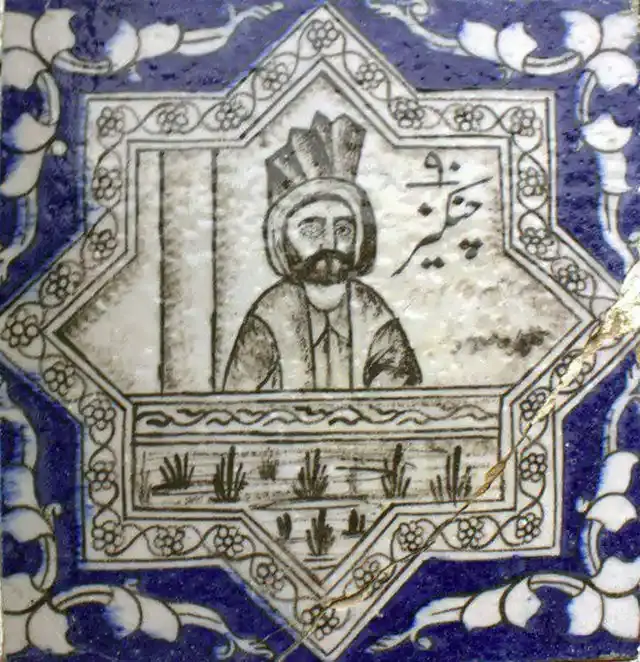
Hospice were later used as religious rules during the Qajar period, when various religious ceremonies were held. The hospice of the king's assistant is one of the most beautiful and famous examples of these religious rules that are located today in the heart of Kermanshah. In particular, this hospice tells the story of conflict and reconciliation between two families that we tell you.
In 1327 AH, a reform movement in Persia was destroyed, as a result of which the "Tekke of the King's Assistant" was destroyed, and the name of the "Constitutional Movement" was attached to that movement, and the order to destroy the hospice and bombard it was at the behest of "Zahir Al-Mulk", which led to the destruction of all decoration work in the hospice along with the walls of the entire building. This decision angered the family of the king's assistant and decided to take revenge, but some families intervened and succeeded in finally completing a reconciliation between the families of the "king's assistant" and "Zahir al-Mulk" and the hospice was not harmed further.
Sections of the hospice of the king's assistant
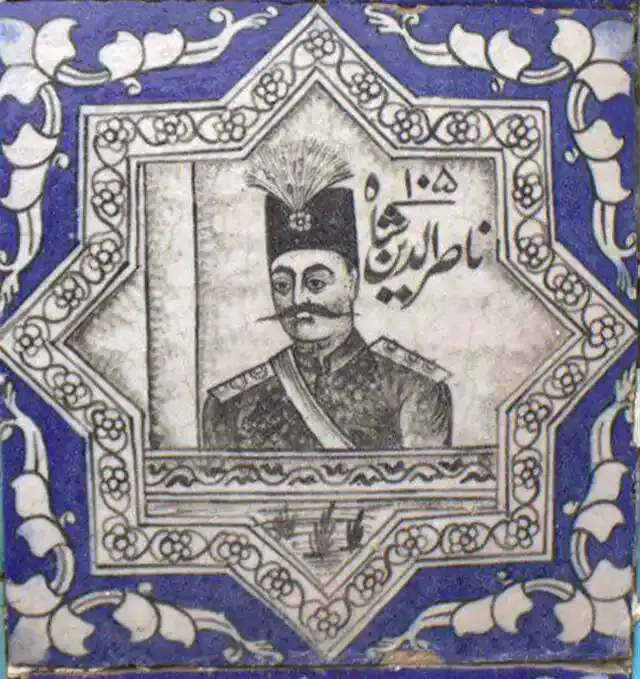
The hospice consists of three sectors; Husseiniya, Abbasiya and Zainabiya, and in the present era the Museum of Human Races in Kermanshah and the Museum of Clothing and Jewelry in the Abbasiya section were added to the previous parts.
In order to reach Husseiniya, one must descend 17 stairs because this structure was placed six meters below street level. At first, there is a room called "Goldsmith of the Khanna" where you find some murals painted on the tiles. Following the traditional hosseniyat construction in Iran, the hospice is housed in a small courtyard surrounded by several rooms and decorated with solid arcades.
As for the Abbasiya building, there is a courtyard and a two-story building on the eastern side, and its walls are decorated with luxurious "Quierda Sika" tiles, to which some scenes of Joseph's entry into the city of Canaan were shown. Illustrations of Qajar statesmen also appear on these tiles.
As for Zainabiya, it is considered the place of the tomb of the king's assistant, who died in 1327 AH, and his tomb was decorated with mirrors in 1374 AH. by Hajj Mohammad Shakuhi Isfahani.
Aesthetic aspects in the hospice of the king's assistant
The tiles in the king's assistant hospice are truly unique, and in fact, tourists distinguish this hospice through its artistic tiles that were made with different techniques and natural colors, and the court of the king's assistant hospice includes scenes of early Islamic battles and the story of Karbala next to illustrations of Persian kings and some symbols of the capital of the ancient Achaemenid empire "Persepolis".
The hospice is a national heritage site with attractive and harmonious architecture, and all the walls of the rooms at the hospice are decorated with magnificent tiles. The interiors of the arches are also covered with large tiles that catch the eye.
![]()
Secrets of academic excellence: how to achieve the highest grades with effective methods
Secrets of academic excellence: how to achieve the highest grades with effective methods more- ADVERTISEMENT
![]()
10 ways you can make money on YouTube
YouTube isn't just for watching videos anymore—it’s a legit way to make money. From joining the YouTube Partner Program to selling your own merch or offering paid memberships, there are plenty of smart ways to turn views into income and build a real career from your channel. more- ADVERTISEMENT
![]()
The Unity Economy: How Isolation Changes Our Buying Habits
Loneliness is becoming a social epidemic, affecting both young and old. Despite being more connected than ever, people feel increasingly isolated, often turning to consumerism for comfort—buying entertainment, luxury, or even companionship. Brands must respond by offering personalization and building communities that help people feel seen and included. more- ADVERTISEMENT
![]()
Rare Roman ruins in Timgad Algeria
Timgad, a stunning Roman ruin in Algeria, feels like stepping into ancient times with its well-preserved streets, grand baths, and rare Roman public library. Built by Emperor Trajan in 100 AD, its beauty, history, and remote mountain setting make it a highlight for anyone who loves exploring old cities. more- ADVERTISEMENT
![]()
The Search for the Lost Temple of Artemis: A Journey Through Time and Secrets
Hunting for the Lost Temple of Artemis-A Journey Through Time and Mystery more- ADVERTISEMENT
![]()
Dar Al-Hajar ... The seven-story stone palace in Wadi Dhahr, Yemen
Perched atop a massive rock near Sana'a, the Stone Palace blends seamlessly into the mountain, appearing ancient though built in the 1930s. Once a royal summer retreat, it's now a museum showcasing Yemen’s rich architecture, with its war-castle design, gardens, and maze-like interior captivating all who visit—or admire from afar. more- ADVERTISEMENT
![]()
Can you really master a skill by learning for one hour a day?
Can You Really Master a Skill by Learning for One Hour a Day? more- ADVERTISEMENT
![]()
Solar panels in the Sahara desert could boost renewable energy but harm global climate
Turning deserts like the Sahara into massive solar farms could power the world and even green the land, but it may also trigger unexpected global climate shifts—like droughts in the Amazon and more hurricanes—making the solution more complex than it seems. more- ADVERTISEMENT
![]()
The most expensive mistakes in history
The most expensive mistakes in history more- ADVERTISEMENT
![]()
Moon Magic: How the Lunar Influence Shapes Earth's Tides
The moon's magical pull creates amazing tides that shape our coasts and marine life. From fishing to clean energy, humans have long benefited from this natural rhythm. The moon's gravity isn't the only driver—factors like geography, wind, and the sun also play a big part in this fascinating phenomenon. more- ADVERTISEMENT














